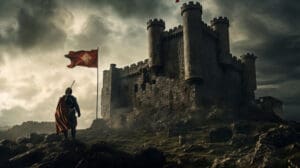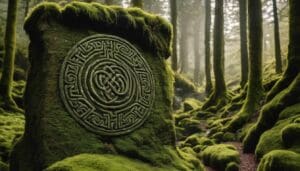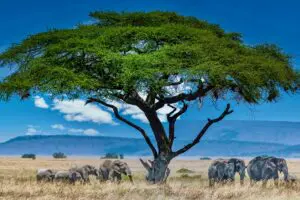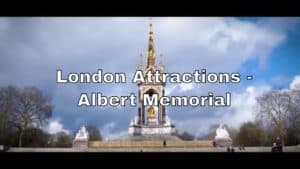The Curragh Plains: Unveiling the Mystique of Ireland’s Timeless Horse Races
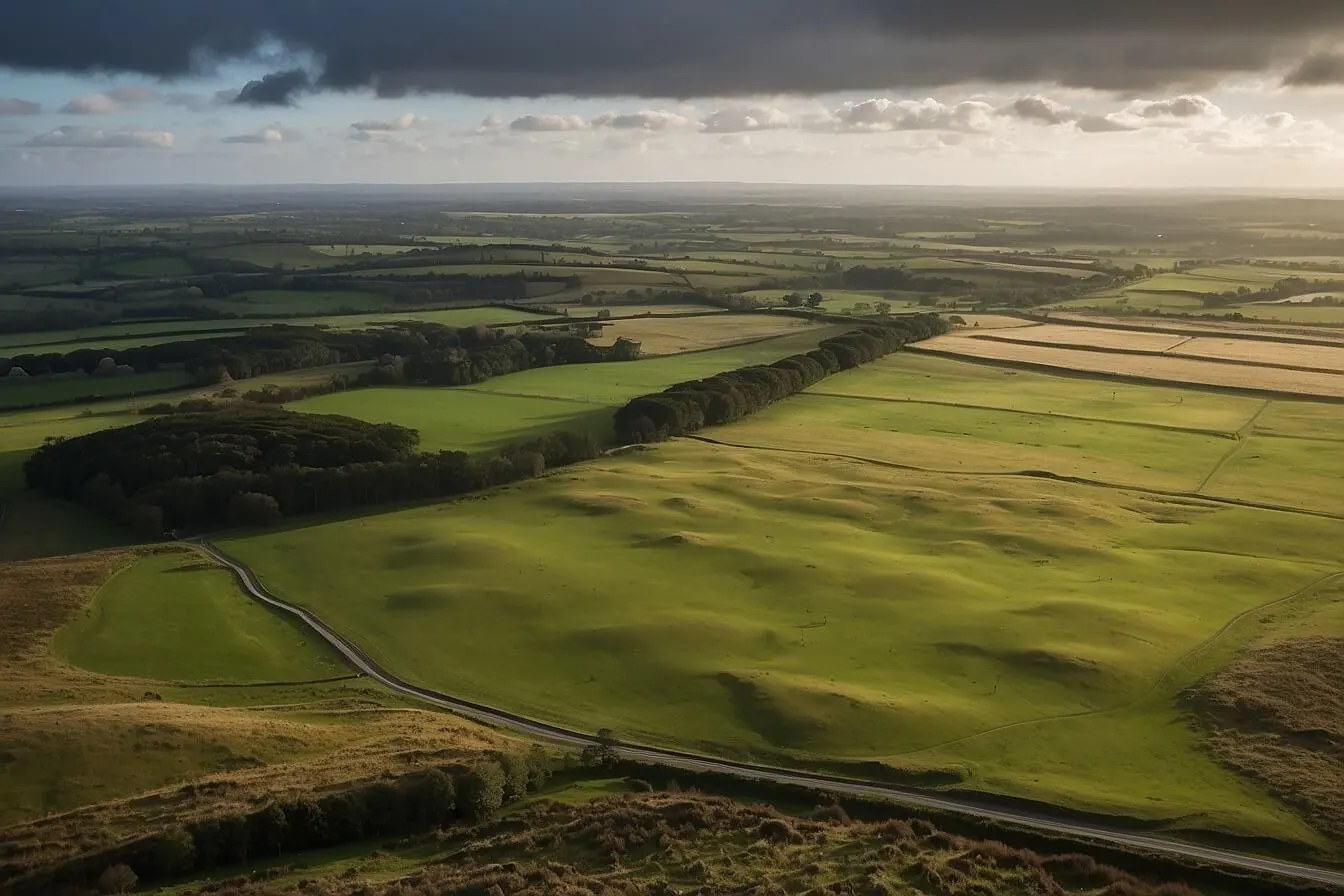
Updated On: March 26, 2024 by Yasmin Elwan
The Curragh Plains stand as a testament to the continuous human connection with the land and its traditions. Spanning over 2,000 hectares in County Kildare, Ireland, this ancient expanse of open land captivates the imagination with tales from its storied past. Its rich, peaty soil has not only proved fertile grounds for the thoroughbreds that train across its gentle sweep but for a history steeped in military, legal, and cultural narratives. The very name ‘Curragh’ conjures images of legendary horse races, significant military drills, and the pastoral beauty of the Irish landscape.
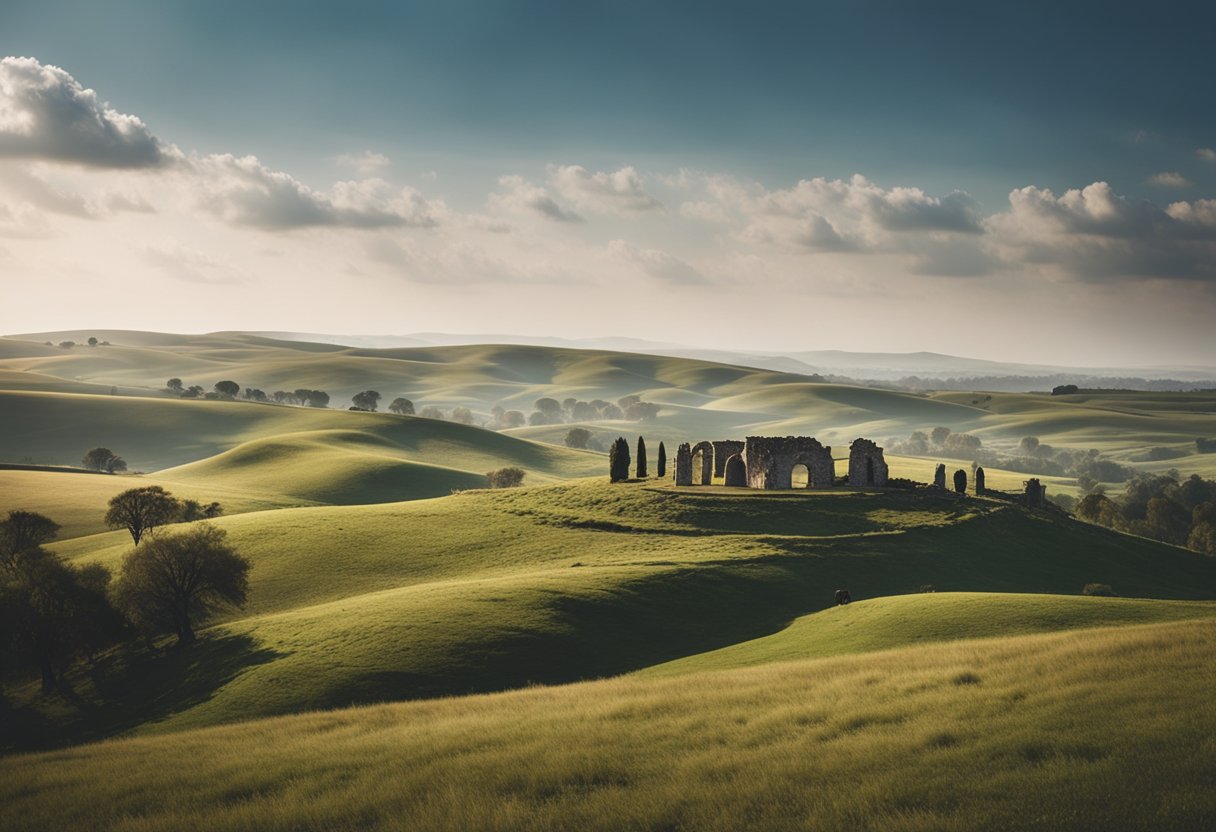
Our understanding of the Curragh Plains is deepened by their legal and territorial definitions that have shaped their use over the centuries. With roots tracing back to at least the 12th century, the plains have been a communal grazing area, a military training site, and a hub of equestrian excellence. Beyond its tangible uses, the Curragh embodies the cultural and social heart of Ireland, hosting events that draw communities together and preserving a way of life that resonates with the rhythm of hooves against its ancient grounds.
Geographical Overview
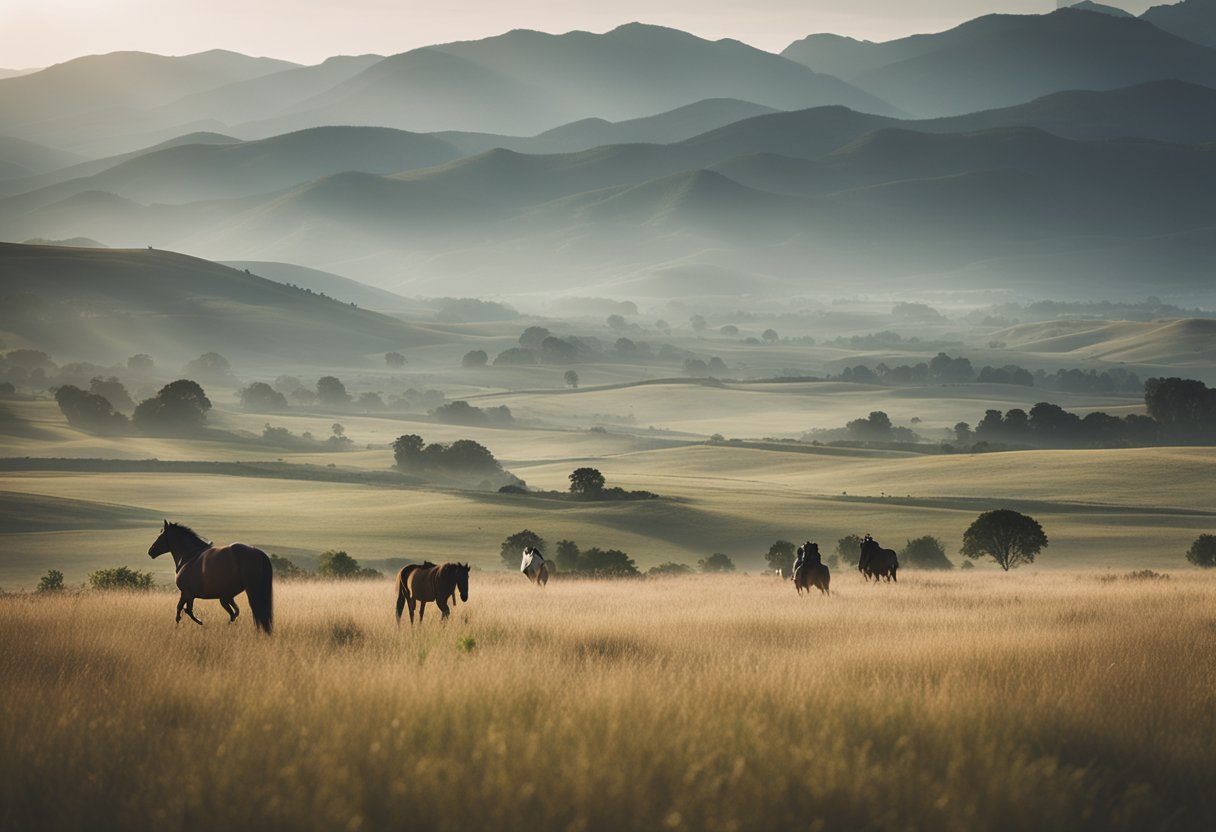
In the heart of County Kildare, we find The Curragh Plains, a historical landscape that presents a rare ecological setting. This section delves into the unique characteristics displayed by its geography, flora and fauna, and the renowned Pollardstown Fen.
Physical Geography
The Curragh is an expansive, flat, open plain covering almost 5,000 acres of common land. This vast area is one of the most significant semi-natural grasslands in Europe, and its topography reveals an unenclosed landscape of both flat and gently rolling plains. Known for its rich pastureland, the plains have facilitated horse breeding and training for centuries. Indeed, the physical geography of the Curragh plays a pivotal role in the identity and history of Kildare, creating a foundation for its equestrian traditions.
Flora and Fauna
The plant and animal life within The Curragh is diverse and adapted to its unique grassland habitat. Owing to the land’s minimal agricultural disturbance, the area has become a sanctuary for a mix of traditional grassland fauna and a variety of flora, including rare orchid species. The semi-natural environment allows us to observe a sustainable ecosystem where indigenous grasses and wildflowers support a range of insects, birds, and mammals integral to the landscape’s biodiversity.
Pollardstown Fen
Located close to The Curragh is Pollardstown Fen, a wetland site of international significance. This alkaline peatland, part of the larger blanket fen system, encompasses a distinctive ecosystem with complex hydrology that supports a host of specialised plants and animals. The careful preservation of Pollardstown Fen ensures that we can continue to study and appreciate its intricate environmental processes and the species it sustains.
Historical Significance
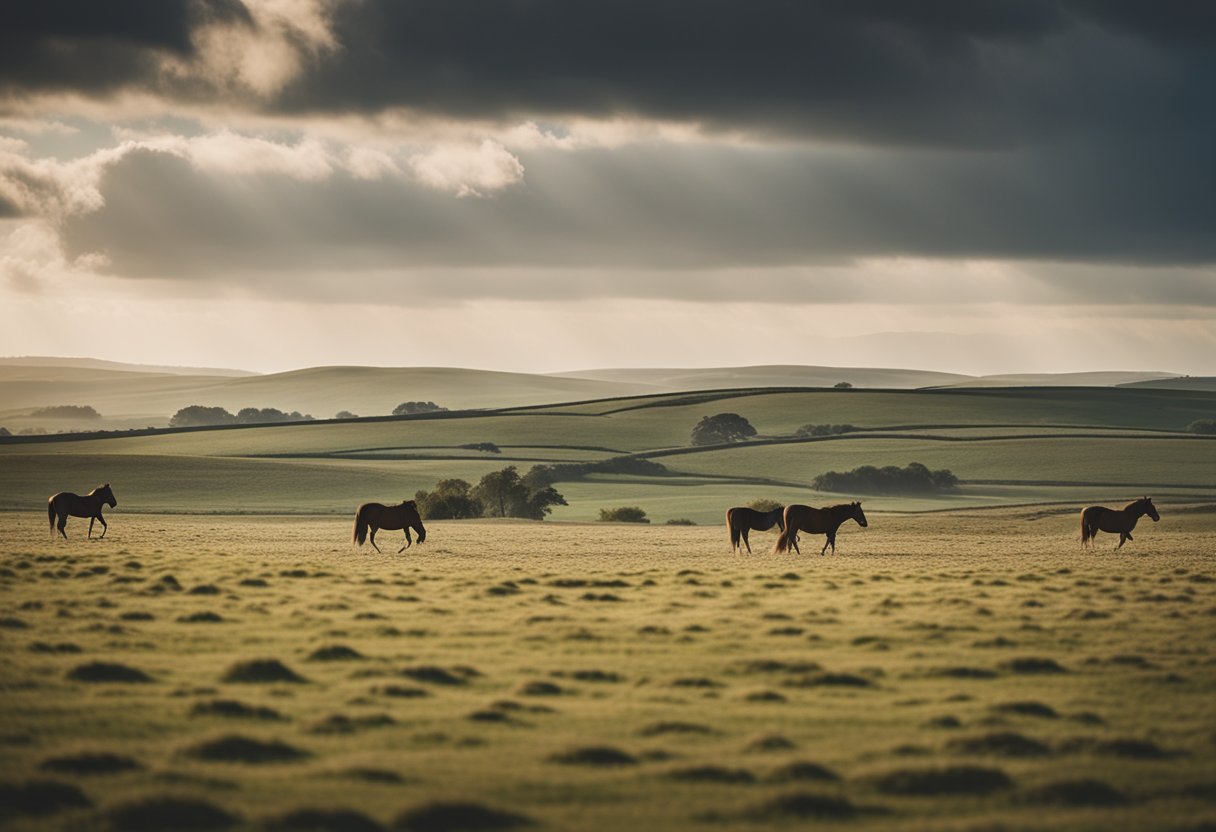
The Curragh Plains hold a profound place in Ireland’s historical and archaeological framework, reflecting a tapestry of past civilisations that roamed these lands.
Ancient Monuments
We find the earliest imprints of human activity in the numerous ancient monuments dotting the landscape. The Curragh of Kildare is home to complex megalithic structures that have withstood the test of time, providing us with invaluable insights into the lives of our ancestors and the sacredness of this terrain.
Gibbet Rath
Gibbet Rath stands as a sombre reminder of a darker chapter in our history. Here, in 1798, occurred a tragic event during the Irish Rebellion where scores of Irish insurgents were reportedly betrayed and massacred. This event has etched itself into our collective memory and underscores the Curragh’s significant role in bearing witness to the nation’s turbulent heritage.
Hill of Allen
Ascending from the plains, the Hill of Allen stands as an indelible landmark tightly woven into Irish lore and history. The hill was reputedly a stronghold of the legendary warrior Fionn mac Cumhaill and his band of warriors, the Fianna. Its presence offers us a palpable connection to our mythological and legendary past, further enriched by remnants of a once-fortified monastery, amplifying the undeniable historical essence that permeates the site.
Cultural and Social Impact
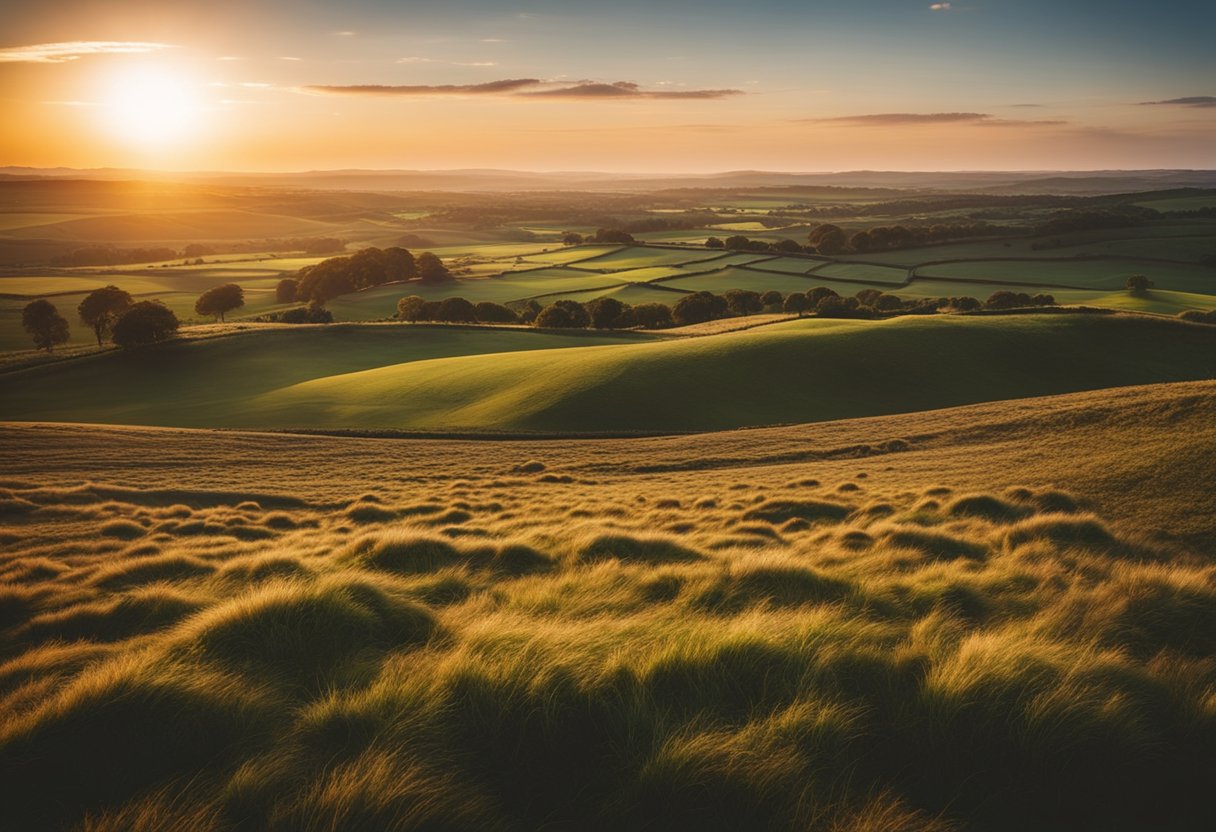
The Curragh Plains have a profound cultural and social impact, deeply embedded in the traditions and history of County Kildare. This section explores the enduring practice of sheep grazing and the influence of The Curragh on literature and cinema.
Sheep Grazing Traditions
The Curragh is synonymous with the sheep grazing rights that have been exercised for centuries. These grazing traditions form part of the commonage rights of the local populace, reflecting a pastoral lifestyle that has shaped the social fabric of County Kildare. The vast expanse of the plains, amounting to thousands of acres, provides an ideal grazing ground for flocks, maintaining an agricultural practice that dates back to ancient times. This coexistence of past and present use underlines the connection between land and local communities, upholding a way of life that is as much a part of The Curragh’s identity as its sheep grazing on The Curragh.
Literary and Cinematic References
The Curragh’s mythical aura and picturesque landscapes have left an imprint on culture beyond the confines of Ireland. In literature, The Curragh’s sprawling beauty has been the backdrop for narratives that span the realms of the legendary and the real. Echoes of its influence are apparent in works that reference the stamina and vigour of the Fianna, ancient warriors of Ireland.
In cinema, The Curragh’s scenic pastures provided a canvas for historical epics, most notably in Braveheart, where its open fields were transformed into battlegrounds, capturing the imagination of audiences worldwide. Legendary figures such as Dan Donnelly, the famed Irish boxer, and Stirling Moss, the renowned British racing driver, are connected to The Curragh, Donnelly for his epic battle on the plains and Moss for testing his limits on this natural stage. The presence of such legends weaves The Curragh into the broader cultural tapestry, marking it as a place where history and legend converge.
Through these traditions and depictions, The Curragh continues to be an emblem of Irish heritage, reflecting the land’s age-old bond with the people of County Kildare and the pervasive power of its legacy.
Equestrian Heritage
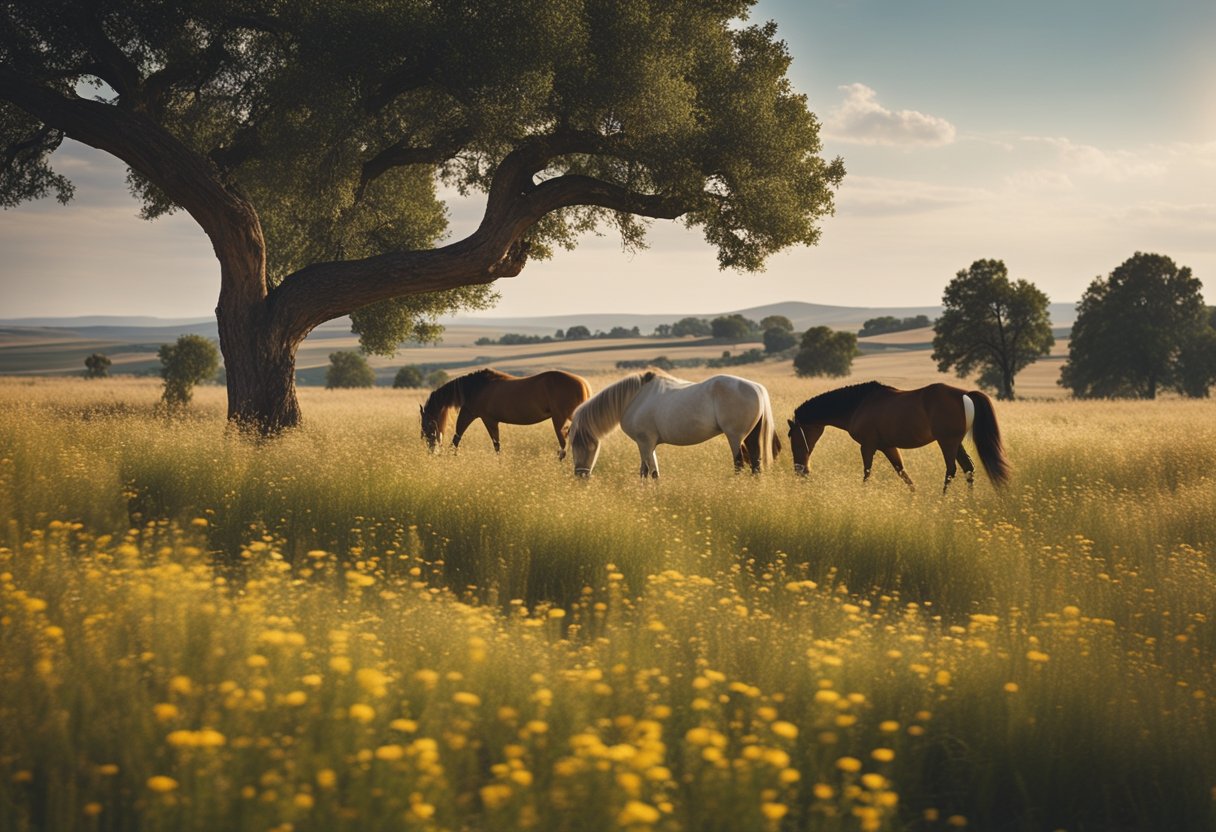
Our journey through The Curragh Plains is not complete without honouring their profound equestrian heritage. This land has been synonymous with horse racing and thoroughbred breeding for centuries.
Horse Racing Prestige
Known for the prestigious Curragh Racecourse, The Curragh Plains are a centrepiece for Irish horse racing. Established in the 1700s, the racecourse holds prime importance in the world of flat racing. One of the most notable events hosted here is the Irish Derby, an esteemed Group 1 race that draws enthusiasts globally. This illustrious race is a testament to The Curragh’s standing in the high-stakes realm of horse racing.
Thoroughbred Breeding
Adjacent to the racecourse, the fertile plains make for ideal breeding grounds for racehorses. The reputation of The Curragh as a breeding hotspot is not by accident but by the careful propagation of bloodlines that have produced countless champion racehorses. The merging of ideal conditions for training and an environment that has supported thoroughbred breeding for generations signifies the vital role The Curragh plays in preserving and enhancing the lineage of elite racing stock.
Legal Framework and Land Rights
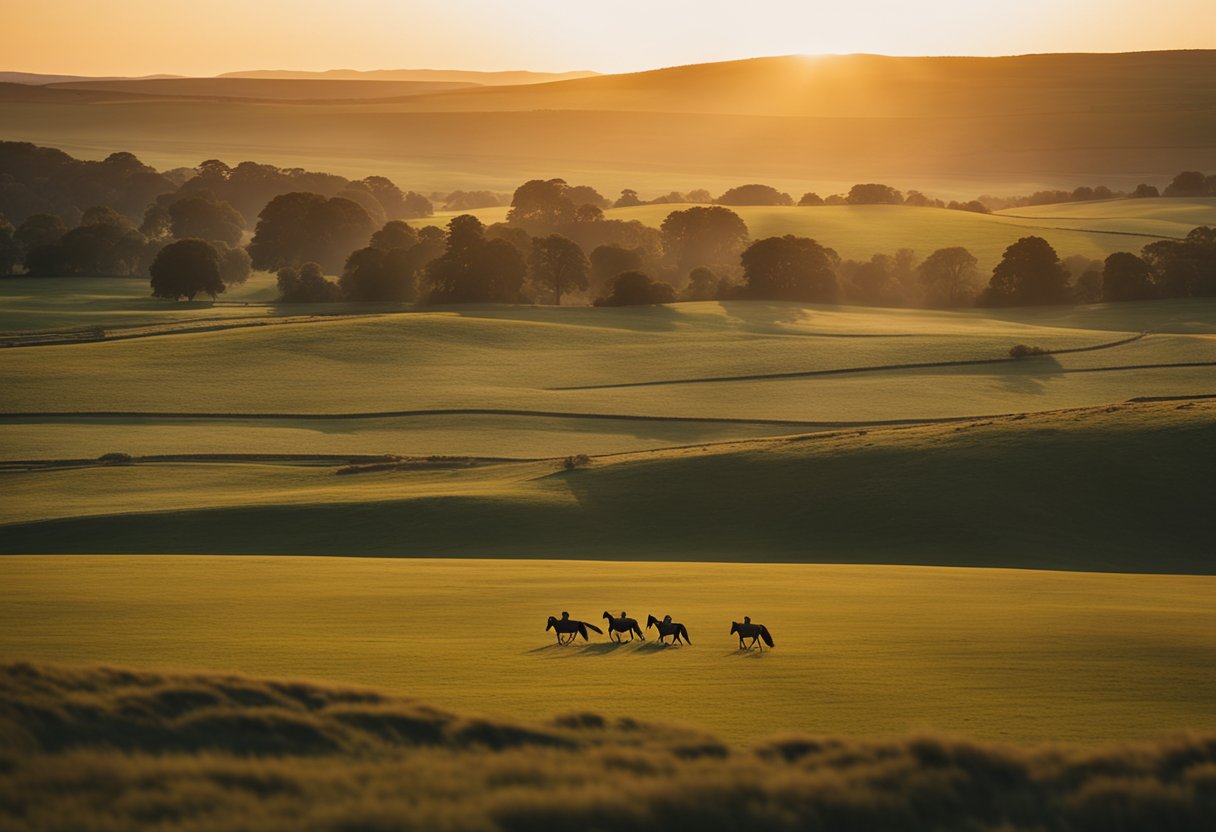
Before delving into the specifics, it’s pivotal to understand that the Curragh Plains are deeply entwined with a legal framework that has shaped their usage and management throughout history. This framework has been pivotal in preserving the plains’ unique ecology and heritage.
Curragh of Kildare Act
The Curragh of Kildare Act has been a cornerstone in the governance of the Curragh Plains. Historic legislation, such as the acts of 1868 and 1870, was introduced to protect the lands. These acts were overseen by the Crown and enforced by the Lord Lieutenant, demonstrating early efforts to safeguard the Curragh for public use. Reflecting on our legal history, the 1961 Act was significant in that it repealed earlier acts, marking a change in the management of land rights and altering the complexion of the plains. Kildare County Council, among other bodies, has subsequently played a role in the stewardship of this land, balancing the needs of preservation with public access.
Modern Management
In contemporary times, the management of the Curragh Plains involves multiple stakeholders, including government bodies and local authorities. The Office of the Ranger of the Curragh, for example, is crucial in overseeing the usage and rights related to the plains. Our current legal stances ensure that ecological integrity and historical significance are upheld amid evolving public interests and developmental pressures.
Through these subsections, we recognise the delicate balance between preservation and modernisation that the legal framework around the Curragh aims to maintain. Our understanding of these legalities reflects our commitment to respecting the heritage and ecological significance of the Curragh Plains.
Military Presence
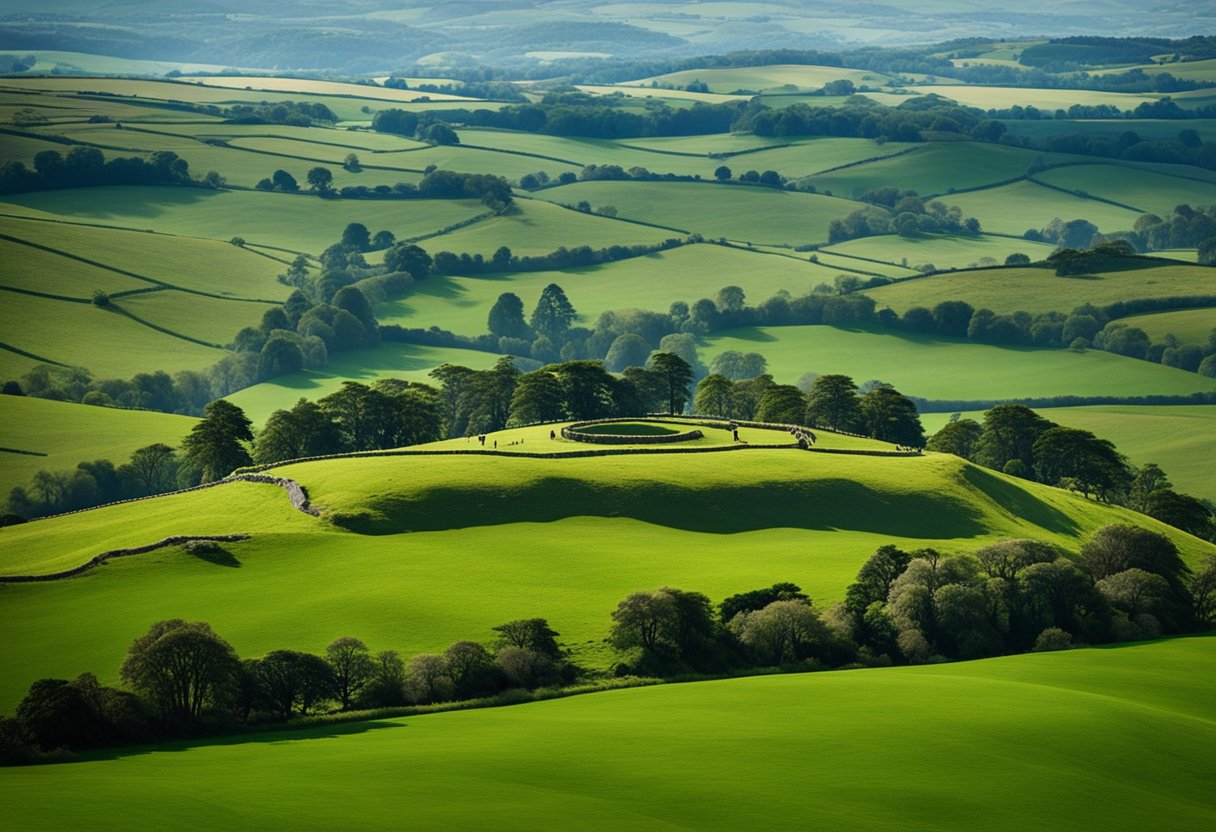
The Curragh Plains have not only been central to equestrian pursuits but have also held significant military importance throughout history, serving as a strategic site for armed forces.
Curragh Camp History
The establishment of Curragh Camp dates back to the 19th century when the British War Office acquired the area to create a permanent military training camp. It was here that troops prepared for major conflicts, including the Boer War and World War I. The location’s expanse proved indispensable for military exercises and manoeuvres.
Irish Defence Forces
After the establishment of the Irish Free State, the Curragh Camp became the headquarters for the Irish Defence Forces. Maintained by the Department of Defence, the camp continues to be an important training ground for Ireland’s military personnel, embodying a deep-rooted legacy intertwined with the nation’s history and security.
Sports and Recreation
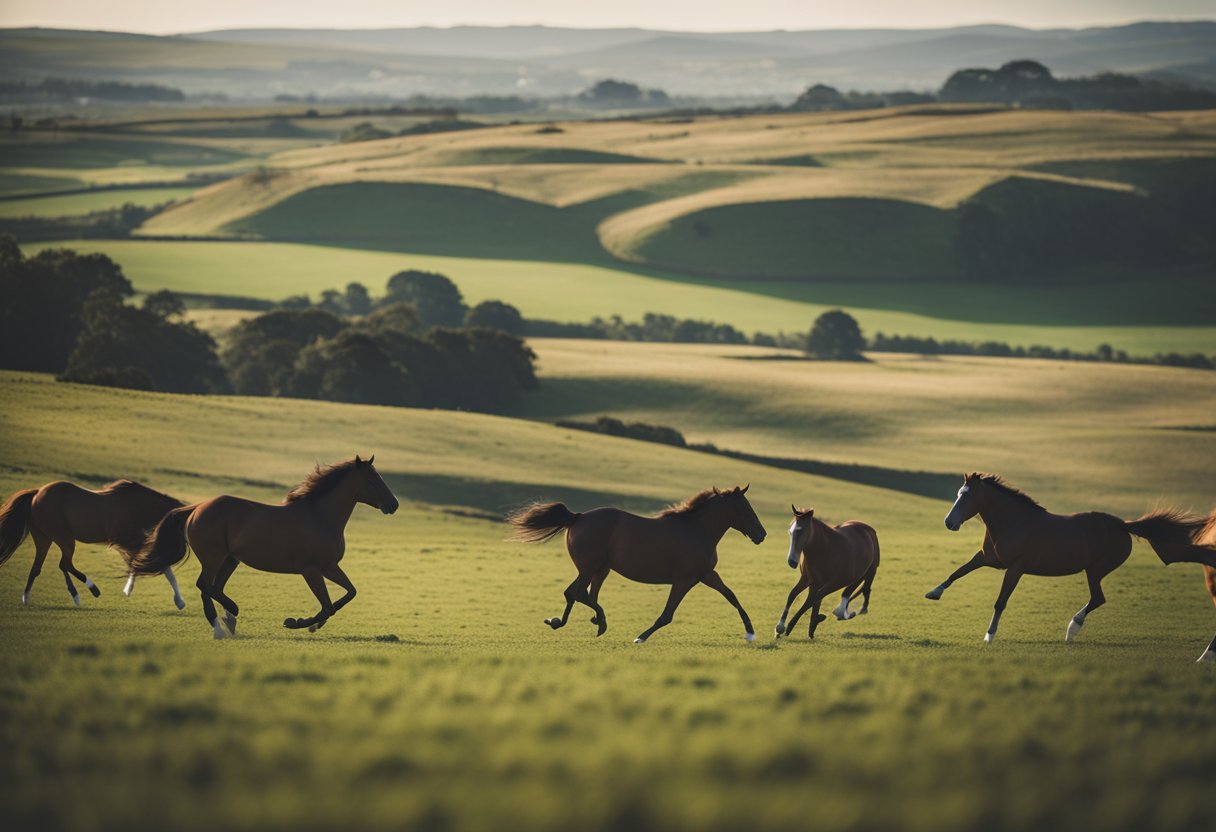
We find that sports and recreation on The Curragh Plains come with a rich heritage and a variety of enticing options. From a leisurely day of golf to the prime equine facilities, the commitment to quality and respect for tradition is evident.
Golfing on the Plains
Golf enthusiasts will be delighted to know that The Curragh Golf Club is a treasure within the deep, open plains. It’s one of the oldest golf clubs in Ireland, where one can play amidst a breezy and historic setting. Enriched by its military past, it continues to offer a challenging yet pleasing experience for golfers. Strategically located near Naas, it’s an appealing destination for those seeking a round of golf steeped in tranquility.
Training Grounds
For those more inclined towards equestrian pursuits, The Curragh’s training grounds are world-renowned. With several miles of pristine land devoted to training, it is no surprise that The Curragh has become synonymous with horse racing excellence. The training facilities are considered to be unparalleled, and the ground’s chalky soil provides an ideal terrain for strengthening and conditioning some of the finest racehorses. These training grounds have historically given rise to champions that have raced across Rathbride and beyond, marking The Curragh as a nucleus for horse training and breeding.
Conservation Efforts
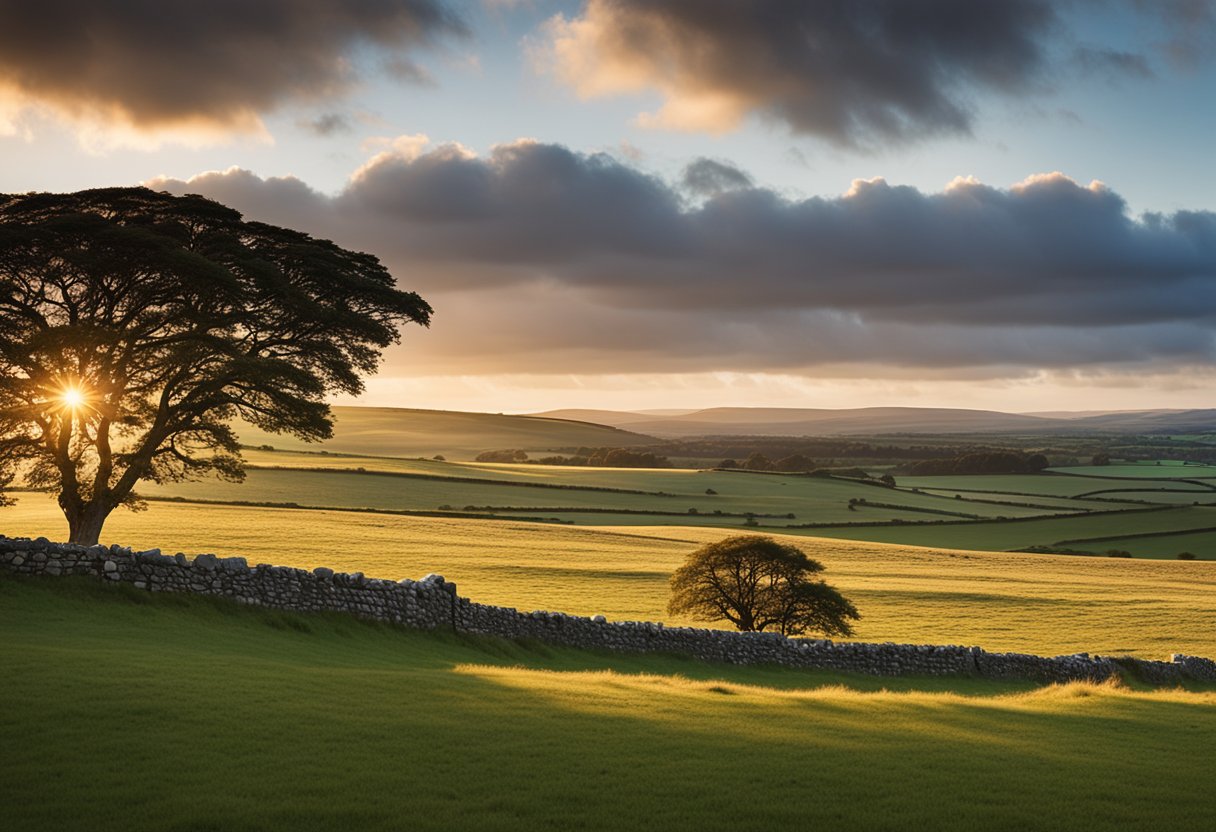
Our team recognises the vital importance of conservation, especially regarding the Curragh Plains, an area steeped in history and natural beauty. As an expansive tract of semi-natural grassland, the Curragh encompasses over 5,000 acres.
Managing the Plains
- Defence Forces: Overseeing much of the land to ensure the fragile ecosystem remains intact.
- Horse Racing Industry and Sheep Graziers: Collaborating closely with conservation guidelines to prevent overuse.
- Recreational Use: Promoting responsible access to clubs and individuals for sport and leisure while maintaining the preservation objectives.
Updated Practices
- Bye-laws: The once-issued bye-laws of 1868, which were in effect up to 1964, have since been revised and updated to reflect current conservation needs.
- Department of Defence: Currently playing a pivotal role in conservation with protective measures that value historical significance and ecological importance.
Conservation Objectives
Our common objective is to ensure the sustainability of the plains. Findings suggest initiatives associated with maintaining the unique landscape of the Curragh are essential. We have aligned our strategies to include:
- Habitat Protection: Safeguarding the indigenous flora and fauna.
- Cultural Preservation: Recognising and preserving the historical aspects of the plains.
- Public Engagement: Educating and engaging the local community and visitors on the importance of conservation efforts.
By these means, we strive to honour and protect The Curragh Plains, ensuring that this ancient land continues to host legendary races and remains a beacon of natural and cultural legacy for generations to come.
Prominent Races and Events
The Curragh Plains have long been the stage for some of Ireland’s most prestigious horse races and events. Steeped in tradition, this historic area plays host to a series of renowned fixtures that capture the spirit of Irish horse racing.
Irish Classics
Irish 1,000 Guineas and Irish 2,000 Guineas stand as cornerstones among Ireland’s flat races. Held annually at the Curragh Racecourse, these races are part of Ireland’s classic races for three-year-old thoroughbreds. The Irish 1,000 Guineas is a contest for fillies, while the Irish 2,000 Guineas opens the field to both colts and fillies, both covering a distance of one mile.
- Irish Oaks: This prestigious classic is a Group 1 race exclusive to three-year-old fillies, running over a distance of 1 mile and 4 furlongs (2,400 metres). A testament to endurance and speed, the Irish Oaks is a defining event in the flat racing season.
- Irish St. Leger: Unlike its English counterpart, the Irish St. Leger invites an eclectic mix of ages, from the three-year-old rising stars to the seasoned veterans, to compete over 1 mile and 6 furlongs. Its open nature often results in thrilling outcomes.
Annual Race Meetings
The Curragh’s calendar is dotted with annual race meetings that draw attendees from across the globe. The Irish Derby is one prime example, offering an exhilarating blend of high stakes and rich heritage as it forms the climax of the Derby Festival weekend. Multi-day events like this proffer not only sporting excellence but a vibrant social atmosphere that encapsulates the essence of the Curragh experience.
- The Curragh Cup: A Group 2 race, the Curragh Cup is part of the busy midsummer racing schedule, and seasoned stayers vie for dominance over 2 miles. This event showcases some of the best long-distance horses in action.
Our commitment to sharing the essence of these iconic fixtures is unwavering. These races and events offer a glimpse into the heart of Irish equestrian culture and are a celebration of the equine prowess and rich history that are the hallmarks of the Curragh Plains.
Notable Figures

The Curragh Plains have been a backdrop to many significant figures throughout history, from ancient patrons to modern guardians whose influence helped preserve the land’s cultural legacy.
Historic Personalities
St Brigid, one of Ireland’s patron saints, is synonymous with The Curragh, her association with the lands dating back to the 5th century. Legend has it that St Brigid was granted as much land as her cloak would cover where The Curragh now lies, marking a strong spiritual connection to the area.
Another historical figure tied to The Curragh is George Wolfe, a prominent 19th-century horse trainer whose legacy is cemented in the racing traditions that permeate the plains.
Contemporary Contributors
Padraig Clancy and Guy Williams are among the contemporary contributors who have dedicated much of their work to studying and promoting the rich history of The Curragh. Their invaluable contributions help ensure the preservation of the land’s deep history and cultural importance.
Tom McCutcheon also emerges as a key modern figure whose efforts in conservation work have aided in maintaining the natural beauty and heritage of these vast plains for future generations to appreciate.
Frequently Asked Questions

In our exploration of The Curragh Plains, we bring to light answers to some of the most commonly asked questions concerning its heritage and continuing legacy.
What significant events are hosted at the Curragh Racecourse?
The Curragh Racecourse is Ireland’s Premier Flat Racecourse, prominently hosting all five classic races in the racing calendar. These include the prestigious Irish Derby Stakes, the Irish Oaks, the Irish 1,000 Guineas, the Irish 2,000 Guineas, and the St. Leger.
What are the notable historical sites within the Curragh Camp?
Within Curragh Camp, one may find a wealth of military history, as it has been a pivotal site for the British Army and, subsequently, the Irish Defence Forces. Historical sites include a military cemetery and the remnants of old barracks, reflecting a rich military heritage.
For what reasons is the Curragh renowned?
The Curragh is renowned for its exceptional quality of pastureland, making it an ideal location for the breeding and training of racehorses. Equally, the plains are known for being a traditional gathering place since at least the 12th century.
Who holds ownership of the Curragh lands?
Ownership of the Curragh lands is held in trust for the people of Ireland. The administration and management of these lands were historically under the auspices of the Lord Lieutenant of Ireland and today fall within the remit of the Irish government.
How has the Curragh Plains shaped local archaeology?
Local archaeology has been profoundly influenced by the Curragh Plains. The area is dotted with archaeological sites, ranging from ancient burial grounds to remnants of historical settlements, providing insights into the lives of past generations.
Can you outline the history and significance of the Curragh Plains?
Tracing back to ancient times, the Curragh Plains have been a central part of Irish history, with its legal recognition dating as far back as 1299. Over the centuries, these plains have played host to fairs, races, and even armies, with the Curragh of Kildare Act 1868 shaping its more modern governance.


